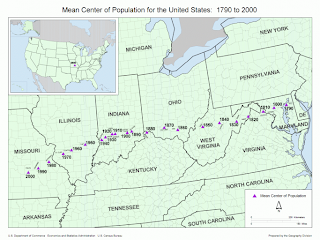
The Super Bowl, excuse me, I should have said The Big Game, (since the NFL restricts their copyrighted name from all but their officially endorsed advertising), is tomorrow. The Pittsburgh Steelers play the Arizona Cardinals in Tampa. The Steelers home is Heinz Field shown in this view from Google Earth in 2006. Look at the two prominent areas of wear along each sideline of the field. These sidelines are where the players, coaches, and trainers watch, wait, and often pace as the game progresses. These areas of wear show us the frequency distribution of this sideline action. Coaches and players move up and down along the sideline following the action on the field. As they do so their steps wear away the turf underneath leaving a record as frequency distributions; more wear indicating a greater frequency of use.
If you look closely you can also see a wear pattern of the team's use of the field during play.









